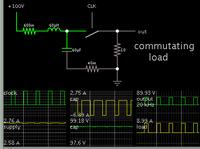Maloth Ramesh
Junior Member level 2
effect of input ripple curret on battery (example car battery )
i would like design sepic dc dc converter, input is (100-150)V supplied from battery (example car batteries, which are connected in series), maximum input current 10A.
what is the effect on battery life, due to the input current ripple, what is the maximum acceptable ripple current. if some one knows any related formula please send me ....
i would like design sepic dc dc converter, input is (100-150)V supplied from battery (example car batteries, which are connected in series), maximum input current 10A.
what is the effect on battery life, due to the input current ripple, what is the maximum acceptable ripple current. if some one knows any related formula please send me ....
